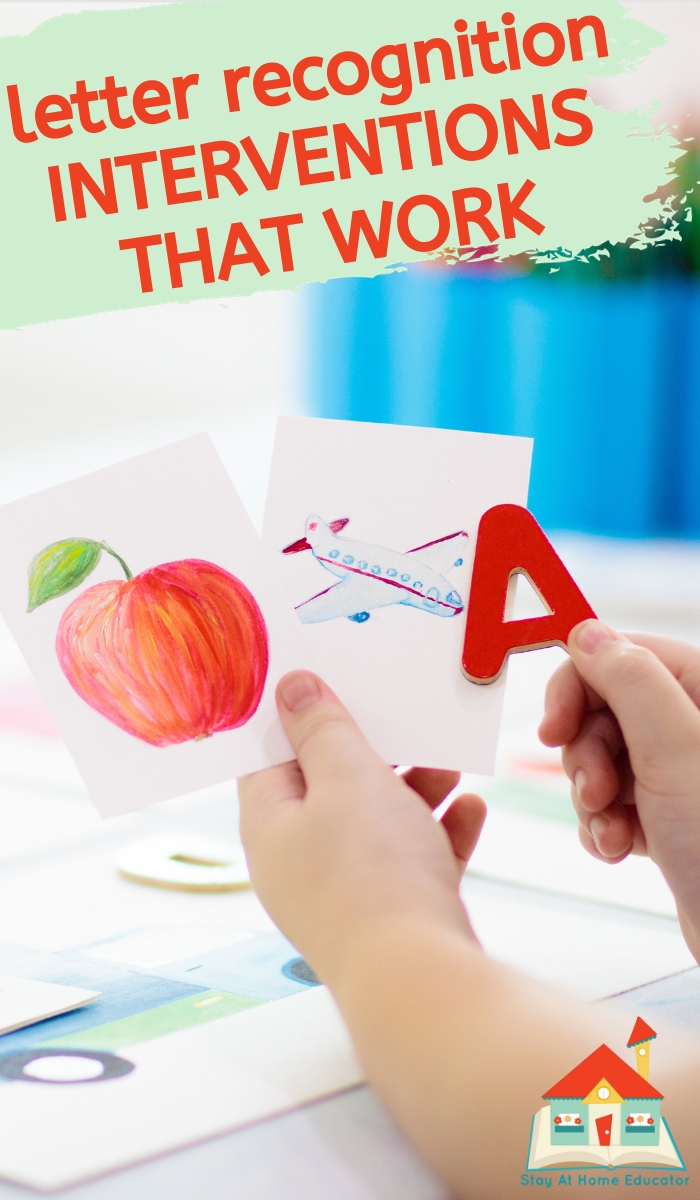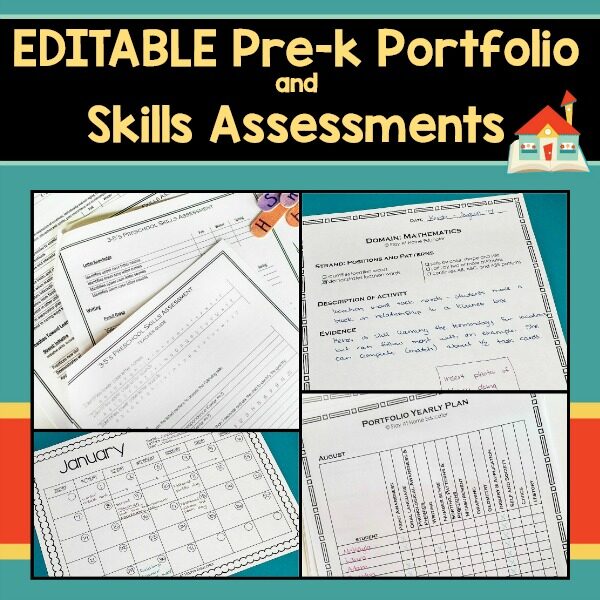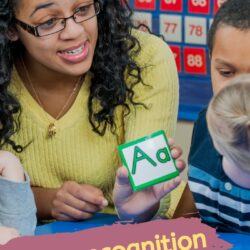Navigating the path to literacy can be a challenging journey, especially when it comes to mastering letter recognition. This is where effective letter recognition interventions come into play. It’s just one of many teaching tools needed for successful letter knowledge instruction.
These interventions are specifically designed to help learners overcome their difficulties, employing a range of innovative strategies and engaging activities. By focusing on the unique needs of each learner, these interventions aim to build a strong foundation in letter recognition.

This post may contain affiliate links, which means that at no cost to you, I may earn a small sum if you click through and make a purchase.
The significance of letter recognition in the early stages of literacy development cannot be overstated.
Research has consistently demonstrated that strong letter recognition skills are one of the most reliable predictors of future reading ability. This foundational skill enables children to identify individual letters, which is crucial for both reading and writing [source].
However, simply recognizing the importance of letter recognition is not enough.
It is vital that this skill is assessed regularly and systematically to track a child’s progress and identify any potential difficulties early on.
Furthermore, incorporating letter recognition into a preschool literacy curriculum in an explicit and systematic manner is key.
A well-structured and comprehensive curriculum not only facilitates the development of alphabet knowledge — a cornerstone of early literacy — but also helps to foster other emergent literacy skills such as language or phonological awareness [source].
By combining effective letter recognition interventions, regular assessments, and a systematic literacy curriculum, we can provide our preschoolers with the support they need to embark on a successful literacy journey.
-
Product on sale
 * Daily Lessons in Preschool Literacy CurriculumOriginal price was: $135.00.$99.00Current price is: $99.00.
* Daily Lessons in Preschool Literacy CurriculumOriginal price was: $135.00.$99.00Current price is: $99.00.
When a Child is Struggling with Letter Recognition
If your child is struggling with letter recognition, don’t panic.
First, it’s essential to understand that every child learns at their own pace and there’s a wide range for when children might master this skill. However, you can help support your child’s learning through a variety of strategies.
For children struggling, consistent and frequent phonics instruction is crucial.
A systematic phonics curriculum will emphasize the acquisition of letter-sound correspondences, which are used to read and spell words.
For more information about what to do when your child isn’t understanding letter sound correspondence, read this article: What to Do When Your Child Struggles With Letter Recognition.
Importance of Letter Recognition in Early Childhood
Grasping letter recognition during the formative years is an essential milestone in a child’s expedition towards literacy.
It establishes the foundation for learning to read and write, constructing the underpinnings for spelling skills, accurate pronunciation, and reading comprehension. In doing so, it significantly contributes to cognitive development and paves the way for future scholastic achievements.
Letter Recognition Skills
Teaching letter recognition to preschoolers encompasses four fundamental elements: letter identification, letter naming, knowledge of letter sounds, and letter formation. Here is the significance of each in the context of preschool literacy education.
- Letter identification
- the skill of recognizing letters This involves discerning letters based on their names, shapes, and sounds.
- Letter naming
- the skill of connecting letter names with their respective shapes
- Knowledge of letter sounds
- the ability to link letter names with the corresponding sounds they make.
- Letter formation
- the skill of independently creating the shape of a letter, as in writing.
How to Assess Letter Recognition
Assessing letter recognition in children involves evaluating their understanding of both uppercase and lowercase letters.
This can be done through informal assessments where the child’s ability to identify letter sounds is tested. Formal letter recognition assessments should be used for regular progress checks.
-
Product on sale
 EDITABLE! Preschool and Toddler Portfolio and Skills AssessmentsOriginal price was: $12.00.$6.00Current price is: $6.00.
EDITABLE! Preschool and Toddler Portfolio and Skills AssessmentsOriginal price was: $12.00.$6.00Current price is: $6.00.
Problems with Letter Recognition
When children struggle with learning letters and sounds, they often face several common problems.
- Children may struggle to distinguish between similar-looking letters such as ‘b’ and ‘d’, or ‘p’ and ‘q’.
- This is known as letter confusion and can hinder reading progress.
- Some children may struggle with auditory discrimination, making it challenging to link sounds to specific letters.
- This is the ability to hear and distinguish different sounds.
- More practice in phonological awareness will help with this.
- Visual processing disorders can occur where children have trouble processing and interpreting visual information.
- Children may also face challenges in oculomotor functioning, which is the ability to coordinate eye positioning during tasks [source].
How to Teach Letter Recognition to Struggling Students
Teaching letter recognition to struggling students can be effectively achieved through the use of systematic and explicit phonological awareness and phonics instruction.
This involves teaching children the nuances of sounds within the English language and letter sound correspondence in a clearly defined, step-by-step process, like our in Daily Lessons in Preschool Literacy Curriculum.
Regularly revisiting previously learned letters and sounds helps solidify understanding. Through this systematic approach, children can gradually build up their knowledge and confidence in letter recognition.
-
Product on sale
 * Daily Lessons in Preschool Literacy CurriculumOriginal price was: $135.00.$99.00Current price is: $99.00.
* Daily Lessons in Preschool Literacy CurriculumOriginal price was: $135.00.$99.00Current price is: $99.00.
Letter Recognition Activities for Struggling Students
Experts in early literacy have developed a variety of interventions designed to improve letter recognition skills.
The following list provides an overview of these interventions, each backed by expert advice and research in the field of early literacy.
These strategies offer diverse approaches that cater to various learning styles and needs, providing educators with a range of tools to help every student succeed.
- Making Words with Letter Tiles
- This intervention involves using letter tiles to form words, helping children understand the relationship between letters and sounds. [Source]
- Storybook Reading and Alphabetic Activities
- Storybooks provide a context for letter recognition, while alphabetic activities help children connect letters to the sounds they represent. [Source]
- Specific Activities Drawn from the Curriculum
- Experts recommend using activities that align with the curriculum, such as practicing specific letters or sounds. [Source]
- Response to Intervention (RTI) Approach
- This approach involves regularly assessing students’ progress and adjusting instruction based on their needs. It can include activities like letter naming. [Source]
- Remedial Computer Intervention
- Computer-based programs can provide intensive, targeted practice on specific skills like letter recognition. [Source]
- Educational Media Intervention
- Educational media can be used to improve early learning skills, including letter recognition. [Source]
Remember, the effectiveness of these interventions can vary depending on the individual needs and learning styles of each child. Experts recommend using a combination of strategies and regularly assessing progress to determine what works best for each student.
-
Product on sale
 * Daily Lessons in Preschool Literacy CurriculumOriginal price was: $135.00.$99.00Current price is: $99.00.
* Daily Lessons in Preschool Literacy CurriculumOriginal price was: $135.00.$99.00Current price is: $99.00.

I’m Sarah, an educator turned stay-at-home-mama of five! I’m the owner and creator of Stay At Home Educator, a website about intentional teaching and purposeful learning in the early childhood years. I’ve taught a range of levels, from preschool to college and a little bit of everything in between. Right now my focus is teaching my children and running a preschool from my home. Credentials include: Bachelors in Art, Masters in Curriculum and Instruction.



Leave a Reply